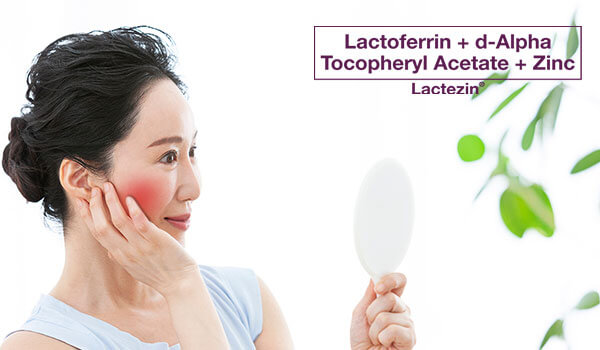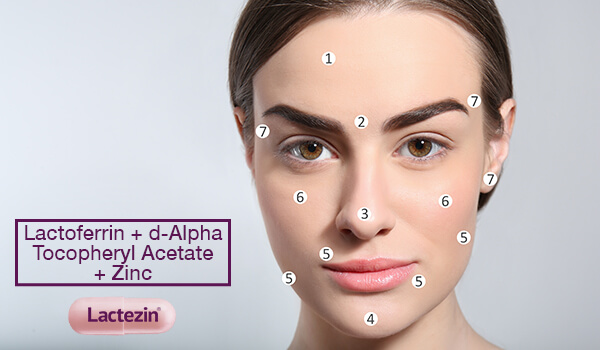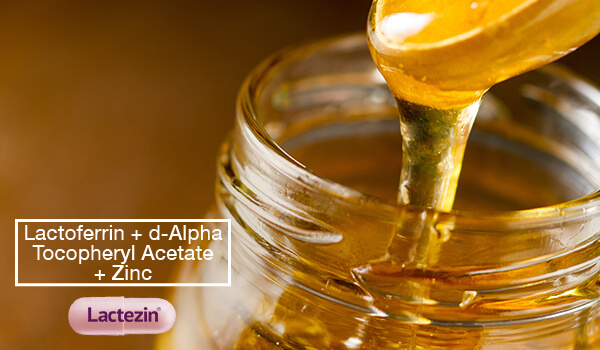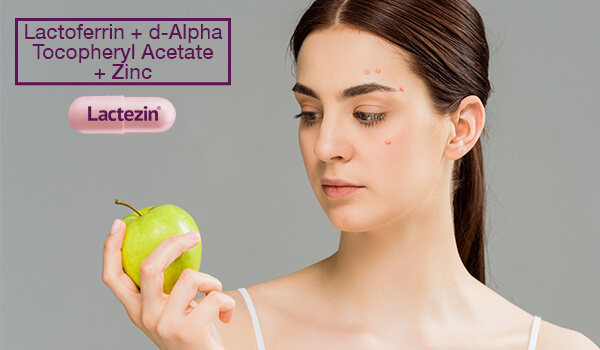Adult Pimples, Rosacea, and Eczema: 7 Reasons Why Your Face is Red

Not only is facial redness unsightly, it can come with discomforting itch and irritation! What could be causing it? From adult pimples to skin conditions such as eczema and rosacea, we’ve rounded up the common causes of facial redness.
The Common Culprits Behind Facial Redness
The countless articles and features could leave you overwhelmed and confused. To help you narrow it down, here are the common causes, plus with tips on how to manage them.
Rosacea
One of the most common terms that pop up when you do a search on facial redness is rosacea. It’s a skin condition where skin is sensitive and overly reactive to environmental triggers such as extreme hot and cold temperatures, stress and spicy food. There are a few important things to note on rosacea: one is that consultation or seeking the advice of a dermatologist is the best way to know if you do have rosacea; two is that while there is no permanent cure for the skin condition, there are ways to manage it. Depending on the severity, dermas would prescribe topical solutions, low-dose antibiotics or laser treatments.
Eczema
Inflamed skin with pink, dry patches and an itching or burning sensation. This description of eczema is often interchanged with that of contact dermatitis. If you think you have eczema, make sure with the help of a dermatologist. For treatment, dermatologists may prescribe a topical cortisone or an anti-inflammatory cream to soothe and ease the redness and inflammation. With your skincare routine, keep it gentle with mild ingredients in products.
Contact Dermatitis
The biggest difference between eczema and contact dermatitis is that the latter is triggered by something you’re allergic to. To avoid allergic reactions, make a habit out of reading the labels of products, and always keep an eye out for ingredients that may trigger your allergies. Experts say that some of the common irritating ingredients are those that you might find in acne treatments. This includes ingredients such as salicylic acid, benzoyl peroxide, fragrances and preservatives. Contact dermatitis is treated similarly with eczema too. An over-the-counter hydrocortisone ointment may help (but make sure to get a variant that your dermatologist approves of), while keeping your skincare routine mild and gentle.
Seborrheic Dermatitis
Seborrheic dermatitis shows up as redness that tends to concentrate in the T zone, or around the nose and eyebrows. With visible scales or flakes, experts describe this skin condition as similar to dandruff. Because the problem is caused by yeast, treatment and solutions are geared towards reducing inflammation and redness by lowering yeast levels. Experts may even advise the use of anti-dandruff shampoos as face wash.
Dryness and Over Exfoliation
Dryness is never a good sign on skin. It’s a sign that the skin’s barrier is weak and that it is vulnerable to infection caused by microorganisms such as bacteria and fungus. This infection could lead to sensitivity and redness. Minimize dryness by limiting exfoliation and using moisturizers regularly. Try products with hyaluronic acid and niacinamides too. Sun Exposure A daily dose of sun is good for Vitamin D, but too much exposure to UV radiation weakens your skin. Never leave your home without smearing on a layer of sunscreen with SPF of at least 20. At night, help your skin heal or recover its lost moisture with a well-hydrating moisturizer.
Adult Pimples or Adult Acne
Adult acne can mean blackheads, whiteheads or adult pimples. It may also include papules which may cover one-fourth to three-fourths of the face. Here’s a short refresher on the trigger and causes of adult pimples.
- Clogged pores. Pores filled with oil and dead skin cells is an easy way to get acne.
- Hormones. Fluctuating hormones create changes in the body including pH imbalance, inflammation and excessive production of oil (sebum) which leads to adult acne.
- Emotional Stress. When you feel scared, anxious or pressured, the adrenal glands produce cortisol which sets off the skin’s sebum production.
- Physical Stress. Environmental stress or poor lifestyle habits such as poor sleep, dehydration and extreme weather trigger influences hormones.
To control breakout-induced inflammation, treat adult pimples and acne as early as possible. Look to products with anti-pimple ingredients such as salicylic acid, glycolic acid and retinol, or opt to try gentle home remedies such as the following:
- Apple cider vinegar
- Aloe vera
- Green tea extract
- Tea tree oil
Oral medication with anti-pimple minerals and ingredients may also help clear out acne. With continued use, lactoferrin, vitamin E and zinc in Lactezin help lessen pimples in as early as 2 weeks!
Facial redness is not something to be alarmed about. But if it persists or suddenly worsens, it would be best to consult with health and skin experts for a check up and a spot-on treatment plan.
Remedy adult pimples and skin care woes with the help of more features on acne. Get your acne questions answered with expert pimple care tips and advice from Lactezin.
SOURCES:
https://www.glamour.com/story/redness-on-face-causes
https://www.aad.org/public/everyday-care/skin-care-secrets/face/facial-redness
https://fldscc.com/2020/02/26/common-skin-conditions-that-cause-facial-redness/
https://www.medicalnewstoday.com/articles/325619#causes
https://www.npr.org/sections/health-shots/2012/10/02/162159367/how-sunlight-weakens-your-skin


